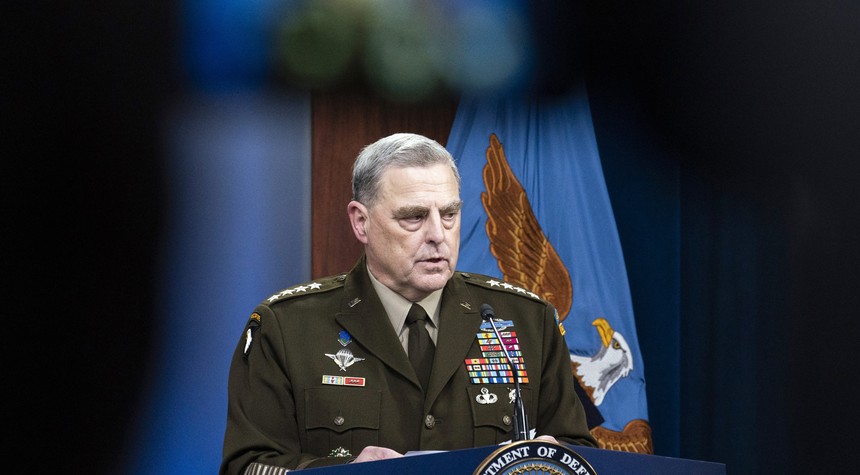Department of the Indefensible: Who Decided to Close Bagram Air Base and Why?

BY BRYAN PRESTON
republished below in full unedited for informational, educational & research purposes:
Closing Bagram Air Base in Afghanistan is clearly one of the most consequential decisions the Biden administration has made in Afghanistan. Bagram was the main base of operations in Afghanistan for going on 20 years. How did the decision to close it happen, and who made the call?
Just over a week ago, Defense Secretary Lloyd Austin and Gen. Mark Milley, Chairman of the Joint Chiefs of Staff, delivered a briefing on the situation in Afghanistan. Kabul had already fallen to the Taliban and U.S. forces were already surrounded at the Kabul airport, from which they were and still are trying to evacuate the thousands of American and allied people stranded in the country.
Bagram Air Base had already been abandoned. That decision had been made weeks, if not months, before Afghanistan’s fall. It formally went dark in the dead of night, with no warning given to our allies, on July 5, 2021. Abandoning Bagram meant ending intelligence and air support for the Afghan military, which proved to be consequential as the Taliban routed the military that the United States had spent 20 years building up.
During the briefing on August 18, a reporter asked Austin about the loss of U.S. aircraft to the Taliban, and Milley about that decision to close Bagram. Austin appeared to be stumped by the question but then proceeded to answer. Milley interrupted and then after Austin finished, defended the decision to close Bagram.
This wasn’t the first time Milley had publicly advocated for closing the vast U.S. airbase. In testimony before the House on June 23, 2021, Milley was asked whether keeping Bagram operational was possible. Milley chose not to answer that question. Instead, he said he didn’t need it. Fast forward to 1:10:30.
Rep. Doug Lamborn (R-Colo.) asks Gen. Milley “Is it not possible to keep Bagram…Air Force Base?”
Milley replies: “Can I make a comment? So, a couple of quick comments here. On Bagram, it’s not necessary tactically, operationally, for what we’re gonna try to do here with Afghanistan. Consolidate on Kabul, with, in support of their government.”
And then Milley backed up and discussed the “momentum of the Taliban,” which by then was already considerable. They were taking territory across Afghanistan with little to no effective resistance. Milley sought to minimize the Taliban’s control, claiming that about 81 district centers were under their control out of 419 district centers throughout the country, and “There’s no provincial capital that is underneath the Taliban control, and there’s 34 of those.”
Gen. Milley clearly sought to do two things with his comment: defend the decision to abandon Bagram, which had not been enacted yet; and minimize the Taliban’s advances across Afghanistan. As the top military commander in the United States, his words carried considerable weight.
Put it another way: If Gen. Milley had said in that moment that the Taliban really was a threat to take over Afghanistan and that closing Bagram was a bad idea, Bagram probably would not have been closed. Milley did not say any of that.
At this point, it’s worth pointing something out: Lamborn’s question was not actually addressed to Gen. Milley. It was addressed to SecDef Lloyd Austin. Lamborn and Austin had been discussing the U.S. intent to help protect women and girls in Afghanistan after the military’s exit, and how the embassy would continue to function and provide programs to that end. But when Lamborn asked whether it was possible to keep Bagram, Milley stepped in.
He did the exact same thing during the August 18 briefing. The question was addressed to Austin, who whiffed, Milley interrupted, Austin then spoke but did not answer that question, and then Milley stepped up to defend the decision to close Bagram.
Does this signify a break between Gen. Milley, JCS Chairman, and his boss, Defense Secretary Lloyd Austin, on the decision to close Bagram before the evacuations were complete? It’s impossible to say at this point but the pattern of behavior is interesting. Milley clearly has the rationale for closing Bagram baked into his thinking. He believes it was the right call. Austin may or may not agree, he has not specifically said one way or the other in public.
In any case, Gen. Milley has publicly defended this decision twice. He owns it. It’s clear now, and was a week ago, and was evidently clear to Rep. Lamborn back in June, that closing Bagram was a dangerous and debatable call. Gen. Milley clearly believes closing Bagram was the right call. During the August 18 briefing, he explained it in terms of operational capability based on requirements coming from above — the White House.
“Securing Bagram is a significant level of military operating forces,” Milley says. “It would also require external support from the Afghan security forces. Our task, given to us at that time, the task was to protect the embassy,” Milley said. Biden gave the military that task.
Does this priority — defend the embassy even if it means abandoning the largest base in the country — suggest that the State Department has more of Biden’s ear and support than the Department of Defense, in a war zone? That would seem to be the case.
“If we were to keep both Bagram and the embassy going, that would be a significant number of military forces…that may have exceeded what we had, or stayed the same as what we had,” Milley continued. (Biden, recall, had declared his purpose to withdraw all 2,500 U.S. forces out of Afghanistan.) “So you had to collapse one or the other. And the decision was made, the proposal was made, from CENTCOM commander and the commander on the ground, Scottie Miller, to go ahead and collapse Bagram. That was all briefed and approved and we estimated that the risk of going out of KIA, or the risk of going out of Bagram, were about the same, so going out of KIA was the better tactical solution…in accordance with getting the troops down to a 600, 700 number.”
The decision chain looks like this: Gen. Austin “Scottie” Miller was the commander at Bagram. Based on Biden’s requirement to pull all U.S. forces out of Afghanistan by date certain, and with just 2,500 troops to work with no room for any additional deployments, and with the embassy as the priority over Bagram, Gen. Miller faced the task of planning for it. The Biden administration’s priority was the embassy, so Miller drafted a proposal to close Bagram and concentrate defensive forces on the embassy. His boss, CENTCOM Gen. Frank McKenzie, greenlit that plan, then it went to Washington, where Gen. Milley, SecDef Austin, and the Biden White House all were briefed and bought in. Bagram would close. The die was cast.
It’s baffling how any experienced military commander could rate using Bagram or HKIA as operationally the same, as Milley says they all did. The State Department may have overruled DoD concerns if such concerns were ever voiced. Gen. Miller may have thought the priority was wrong, that he lacked sufficient resources, or something else, but we don’t know. He left Afghanistan on July 12 and has not been heard from since. Gen. Miller was not in the country to execute the plan that he drafted, a decision that should also be questioned. Bagram offered greater defensible standoff positioning, it offered more space to house evacuees, it had numerous combat ground and aircraft on-site, it was outside of downtown Kabul which was overrun by the Taliban and other terrorist forces, and it offered a second runway. One of those could have been used to continue the evacuations, while the other could have been used for that or for aerial military operations. Bagram was clearly the superior option from an operational point of view, though it posed its own travel hazards since it’s about 30 miles outside of Kabul. But if the priority was the embassy and that was non-negotiable with the White House, the military had little choice.
If, that is, the military was giving useful and candid assessments and advice to the White House.
Milley’s defense of closing Bagram on August 18 was different from how he justified the decision back in June, when he proactively said that “it’s not necessary tactically, operationally, for what we’re gonna try to do here with Afghanistan. Consolidate on Kabul, with, in support of their government.” Clearly, he was wrong about that. It was necessary from an operational point of view to keep Bagram functioning. Did he tell Austin, the White House, or the State Department the same?
All of this raises two questions. One, are Biden’s demands that he is placing on the military impossible to meet? Two, of what quality is the operational and tactical advice the military is giving to the Biden White House?
Milley seems to tactfully answer the first in the August 18 briefing when he discusses the requirements of the job the military was given. Essentially, we had to abandon Bagram because Biden would not authorize more force. But he undercuts that argument on June 23 when says that operationally he doesn’t even need Bagram.
Clearly, today, after 13 U.S. service members have been killed and Kabul airport remains surrounded by enemies, and the U.S. military openly says it’s now depending on the Taliban for security, abandoning Bagram was a colossal mistake. It’s going to rate with the Bay of Pigs as one of the most serious and consequential blunders in U.S. military history.
What the Biden White House and the military have created is an Alamo-style siege in a hostile country thousands of miles from home, but worse: It’s surrounded by multiple enemies who hate each other, who have no thought for civilian casualties, who can and probably are using each other as proxies against the United States, and who all know that images of dead Americans will go straight back to U.S. computers, phones, and TV where those images will impact Biden’s next moves. The enemies, who are not operating in concert, have the initiative and can decide whether to storm the airport or not. They are all making that calculation independently of each other and outside what most would consider rational decision-making. Some of those enemies are now armed with American weapons and uniforms.
Additionally, Biden himself is of questionable capacity, is an extremely weak and indecisive man, and has a track record going back decades for getting everything wrong.
